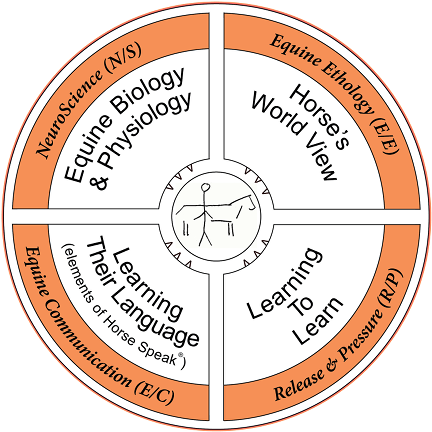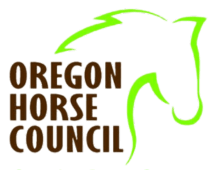“Greetings are such a casual, ubiquitous part of our own lives that its easy to overlook how complex and information rich they are. A persons identity, state of mind, intentions, a sense of mutual trust, perhaps an assertion of status. All that is conveyed by a simple hand shake or nod.” -National Geographic
Much of animal communication occurs outside the realm of our perception.
Humans and animals have developed thousands of ways to say “Hello”. Even NOT saying hello is still saying something about the situation. In the last 20 years Ethologists and researchers have observed and categorized the many different ways animals say hello. Whether in written, verbal or just using body language, all creatures have a way of acknowledging the “other”.






Why is “the greeting” so important to the horse?
Horses say hello using their whole body to inquire about the other. During the greeting, they give and receive these from the other:
-
Recognition- identity
-
Emotional memories – safety, reinforcement of bonds
-
Intentions
-
Sense of mutual trust (or not)
-
Assertion of status
Their body stance, ears, eyes and facial tension send thousands of signals to the other. Vocalizations, movement and smell add to the communication.
The olfactory lobe in the nose is directly connected to the amygdala in the brain so chemical reaction to the smell of the other horse goes directly to the part of the brain that deals with emotions.
When smelling a person, a saddle, the air, etc. they are using that information to make decisions about the current situation relative to previous emotional memories that their brain has catalogued. This helps them make very quick, usually accurate, decisions about their safety in the current situation. No matter what the complexity, we know that the greeting and saying hello is very important for all species.

For better or worse, humans do the same thing. If you had a bad experience, in your childhood, with someone smelling of some type of after shave, it can be very difficult to overcome the automatic reaction to people wearing that same scent as an adult.
This is Attencion and YoYo saying “Hello”.
Information exchange and relationship maintenance is all part of the hello.

YoYo and Khemoson are greeting one another for the first time. Their greeting is full intent and context. Neither horse is comfortable yet and they are very tense. They have some negotiating yet to do before they get their feet squared up with each other.
Most people say hello to their horse when they arrive at the paddock, but most of the time it is a one-way greeting- person to horse. We haven’t known how or why to wait for the horse to tell you how they are feeling.
Until recently, when a human and a horse come together there has been no formal way to say hello. We now have a way through Horse Speak that gives both parties the information they need to feel safe can connected. Horse Speak offers us a way to say hello in the horse’s language- which, obviously, they already know. With our bigger brains, it is more reasonable for us to learn and use their language than vice-versa.

This is Andy at just 1 year old. This how I used to approach and said hello before Horse Speak. Today I realize that the intent was missing behind the hello. At that time I did not fully understand that he was watching my full body language. I could tell Andy was responding positively, but I was largely unaware of what his posture and body language was saying to me. Still, it felt good, so I continued to greet him this way for the next 8 years until I began to learn the Greeting Ritual as described in Horse Speak.
Here I am greeting Cion. This is a better greeting than the previous example with Andy, but two things are not quite right:

1) The muscles around my eyes are tense which tells the horse I am not completely calm (in Homeostasis/Zero). Please be assured that the horse is looking at you closely enough to notice even the smallest body cue. We were doing a photo shoot that day and this was the last photo before lunch. What I was really saying was, “Let’s get this done so I can eat”.
2) It is also a bit rude to ask someone to say hello just when they have taken a bite of hay. My behavior is representative of what I call “taking a marble out of the jar”- asking him to do something he really doesn’t want to do and not taking it seriously when he makes the effort. See BLOG on Lucindab.com “Marbles out of the Marble Jar for Horse’s Trust”.

In this picture with Chris & Cion. Cion can tell Chris is calm (“at Zero”) due to his calm body, eyes and breath. He is saying a simple, “Hello, how are you today”, with no intent beyond that. There is depth and calm in the greeting Cion is giving. This simple greeting might be quick or take 10 minutes or more. When the hello is done to the horse’s satisfaction they are ready to continue a conversation, calm and “at Zero”.
What is important here is you and the horse have an opportunity to transform the relationship from an autonomous one (horse alone) to one of a group/herd. After this transformation, the horse is feeling safe and beginning to watch for your next action. Feeling safe is where the magic happens no matter what discipline you are in. Being calm and understanding the task is the foundation of success. What better way to start than by saying “hello”.

After the greeting they do what is called a “check in” like Attencion is doing here. This enables both human and horse the opportunity to stay connected all the way through the session you are in together.
Through the greeting ritual I have found a richness and pure joy of connecting with my horses. You too can have this connection and when you do- the satisfaction is beyond description.
Thank you
Lucinda
For events/clinics and more information to get you started with “Greeting Ritual” please go to- https://www.lucindab.com/events

